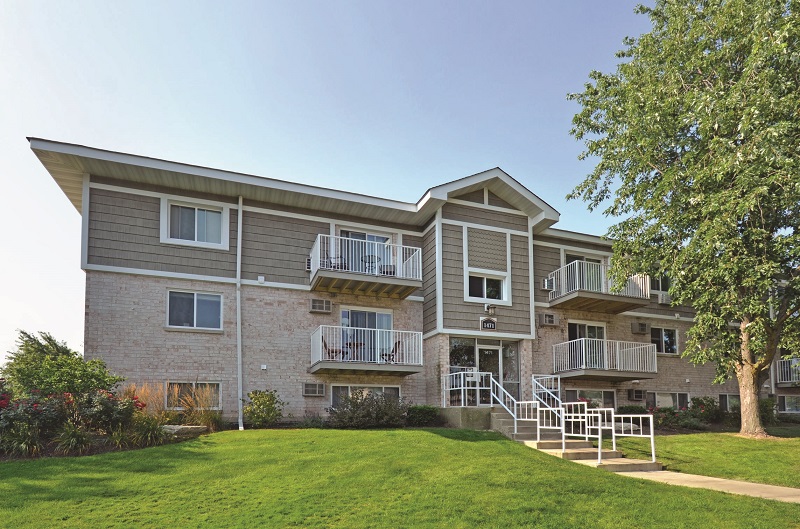
Renters and investors are still seeking out multifamily space. And the demand for apartment living is showing no signs of slowing, according to Kia Crooms, area vice president of the Midwestern region for King of Prussia, Pennsylvania-based Morgan Properties.
We spoke with Crooms about the enduring strength of the multifamily market and why Morgan Properties is eager to expand its apartment holdings in the Midwest. Here is what she had to say.
Why has demand remained so strong for multifamily properties for so long? What are the factors fueling the long hot streak of this asset class?
Kia Crooms: The economy has certainly helped. There has been excellent job growth in the United States. Wages for individuals continue to rise. People have access to cash. At the same time, the supply chain issues persist. That makes it difficult to build as many new homes as people want. Renting, then, is a great option for people today.
Housing prices are high, too. That is inspiring more people to rent. We are seeing an excellent retention ratio when it comes to lease renewals. Folks are even selling their homes, taking out the cash, and downsizing to apartments and townhomes. They want the lifestyle and the lack of maintenance that comes with renting instead of owning.
What about rising interest rates? What impact is that having on the number of people who want to rent instead of buy?
Crooms: When interest rates are higher, people are more likely to rent. But our investors are still excited about multifamily properties, too. Our investors continue to be excited about different markets, especially when it comes to the Midwest. There are many markets in the Midwest that are always strong.
Morgan Properties has made several recent multifamily acquisitions. We entered the Indianapolis market with a property of more than 2,100 units. We have also recently entered the Chicago suburbs with purchases in Elgin, Palatine, and Schaumburg. We continue to find ways to build our portfolio.
Why make the move to Indianapolis? What attracted you to this market?
Crooms: As an organization, we are oversaturated with properties in the East Coast and Sunbelt regions. Indianapolis was an untapped market for us. We like the growth potential in the Indianapolis area. There are some good meat-and-potatoes properties there when it comes to Class-B assets. There is a Class-B market there that is untapped and in our wheelhouse. We do that section of the market well. We like to buy those properties and add value to them.

What are renters looking for today from multifamily properties?
Crooms: Coming out of a pandemic, people are now looking to be outside. They are looking for more space. They are looking for everything from outdoor kitchens and grilling spaces to fire pits that they can use in the evenings. They want to really live and gather with family and friends. That’s why we like the Class-B garden-style apartment communities. There are so many value-add opportunities. We can add a lot to the outdoor spaces in these communities.
The way people are living today, things like dog parks have become more essential to folks. They want that off-leash exercise for their furry friends. They want open kitchens outside or splash parks in tandem with swimming pools. Anything that involves spending time with family and friends is important today.
There is no one-size-fits-all list of amenities, though. What works in Michigan might not work in New Jersey.
Speaking of the pandemic, it seems like the multifamily sector held up really well even during the worst days of COVID and that the sector has emerged even stronger today.
Crooms: There were some industries that were hit hard by the pandemic, such as hospitality and retail. We did see some softness when it came to rent collection, but our team members were good at being that expert when it came to helping people source those funds. The government and other agencies offered financial assistance that we could connect people to. There were no off days for our staff during the pandemic. We were there to be of service to the residents.
Today, many renters are staying in place and renewing their leases. Many are doing this because they are nervous about making the move to buying a single-family home with how the interest rates are rising. They might not have the money for a down payment. This all makes multifamily a strong option for people.
Do you plan on acquiring more properties in the Midwest?
Crooms: We do. We are always looking for growth opportunities. Even if we wanted to rest, our investors and employees won’t allow it. It is so lucrative out there now in the multifamily space. We are interested in those value-add opportunities where we can find more meat on the bone by upgrading apartments and townhomes and the amenities in those spaces. That is in our wheelhouse. That is where we win and where we are always looking to expand and grow.
Do you upgrade these Class-B properties enough to turn them into Class-A space?
Crooms: Sometimes that does happen. It depends on the spend and the demographic we are trying to serve. It’s about what the market dictates for a property. We want to make the changes that people want to see, bring in what has been missing from a development. That’s the recipe. We’ve done it over and over, but every property is different. The same amenities don’t work everywhere. We do our due diligence when it comes to the market. We study what people want to see.
The multifamily market has been strong for so long. Do you see demand for apartments, from both renters and investors, continuing to hold steady or rise throughout the rest of this year and into next?
Crooms: We will continue to see strong numbers. Some markets might soften a bit, but I don’t see any huge drop-off happening. The supply chain issues have not been fixed yet when it comes to building new single-family homes. We still don’t have enough housing to get everyone’s heads into beds. Adult children who moved back with their parents will be leaving again to find their own places to live. People are branching out and getting their own apartments and townhomes. One household is now becoming two. Do I see occupancy in the multifamily sector softening a bit? Sure. But I don’t see a huge drop-off. Our occupancy numbers and demand for apartments will both remain high.
Source: No huge drop-off coming: Multifamily market expected to remain hot into 2023
https://www.creconsult.net/market-trends/no-huge-drop-off-coming-multifamily-market-expected-to-remain-hot-into-2023/




